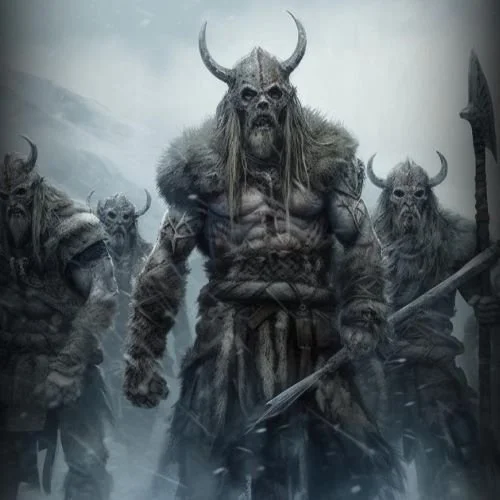In the chilling legends of Norse mythology, among gods, giants, and heroes, lurks a darker, more terrifying figure: the Draugr—the undead of the Viking world. These are not mere ghosts or zombies. Draugar (plural) were corpse-like beings, risen from their graves, infused with malevolent power and a thirst for vengeance, greed, or glory.
What Is a Draugr?
The word “draugr” (Old Norse: draugr, meaning “ghost” or “again-walker”) refers to the animated corpse of a dead Norseman, usually a warrior or king, who refuses to rest.
Unlike modern undead tropes, Draugar were believed to:
Retain intelligence and awareness
Possess supernatural strength
Wield magical abilities
Guard burial mounds and treasures
They were not cursed souls seeking redemption—but dangerous, corrupted beings, hostile to the living and often consumed by jealousy, rage, or greed.
Origins and Causes
A person could become a Draugr for several reasons:
Improper burial rites or lack of respect for the dead
Dying with unfulfilled ambition or hatred
Being an especially greedy, arrogant, or evil person in life
In some sagas, black magic or necromantic rituals were responsible
Their emergence from the grave was seen as a disturbance in the cosmic balance, and their presence brought disease, madness, and death.
Powers of the Draugr
Far from being clumsy or slow, the Draugr had an arsenal of terrifying powers:
Superhuman Strength: They could crush bones and lift enormous stones.
Shapeshifting: Some Draugar took the form of animals like bulls, seals, or fog.
Size Shifting: They could grow giant during combat to intimidate or overpower enemies.
Control over Weather: Some tales claim they could summon storms or darkness.
Prophetic Visions: Draugar occasionally foretold death or disaster.
Psychic Influence: They could instill nightmares, madness, or sickness in the living.
They often haunted burial mounds, attacking trespassers or those trying to loot grave goods. In some cases, Draugar roamed far from their tombs to terrorize villages or murder enemies.
Draugar in the Sagas
Norse sagas are filled with horror-tinged tales of the undead. Some iconic Draugar include:
Glamr, from Grettir’s Saga: A shepherd who becomes a Draugr after death. He terrorizes a valley until slain by the outlaw Grettir in a brutal duel. Glamr’s dying curse eventually leads to Grettir’s own downfall.
Kárr the Old: A Draugr who guards his treasure mound until killed a second time with ritual decapitation and burning.
Þórólfr bægifótr: A landowner whose greed and ill-will cause him to rise as a powerful Draugr, cursing his homestead and murdering intruders.
These stories weren’t just spooky entertainment—they warned of the dangers of greed, hubris, and unclean death.
How to Stop a Draugr
Killing a Draugr required more than just brute force. Norse traditions prescribed specific methods to ensure they stayed dead:
Decapitation
Burning the corpse to ash
Throwing the ashes into the sea
Driving a stake or iron object through the chest
Sealing the burial mound with sacred runes
Some sagas describe rituals performed by priests or wise men to banish Draugar and purify haunted grounds.
Legacy in Horror and Pop Culture
The Draugr myth helped lay the foundation for many modern undead archetypes, especially in Scandinavian and fantasy fiction. Today, they appear in:
Video games, like Skyrim and God of War
TV shows, like Vikings or The Witcher
Books and comics, especially those drawing on Norse horror or dark fantasy
Though similar to zombies or revenants, the Draugr’s eerie intelligence and mythic presence make them uniquely terrifying.
The Eternal Rest Disturbed
To the Norse, the Draugr was more than a campfire tale—it was a manifestation of spiritual imbalance, a warning that even in death, the consequences of a man’s life could spill into the world of the living. Whether as punishment, vengeance, or unfulfilled rage, the undead refused to be forgotten.







